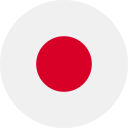映画と劇場 - 映画技術とフィルム編集
ここでは、「クローズアップ」、「モンタージュ」、「フラッシュバック」など、映画の技法や編集に関連する英語の単語を学びます。
レビュー
フラッシュカード
綴り
クイズ

a filmmaking technique that uses pre-existing or intentionally recorded audio or video footage to create a sense of authenticity or realism in a new production

見つかった映像, 見つかった映画
a technique that allows for precise and repeatable camera movements and is often used for special effects in film and television

モーションコントロール写真, モーションコントロール撮影
a technique in filmmaking where a camera is set up to follow a predetermined path or movement, usually using a computer-controlled camera crane or dolly

オートマビジョン, 自動撮影技術
a cinematic technique where a single frame is repeated and played back, creating the illusion of a still image

フリーズフレーム, 静止画
a cinematic technique that uses a sudden and unexpected sound, image, or event to startle and frighten the audience, often used in horror movies

ジャンプスケア, 突然の恐怖
a technique used in video production where still photographs are panned and zoomed in a way to create a video effect

ケン・バーンズ効果, ケン・バーンズ技法
a cinematic technique where the camera is positioned below the subject, shooting upwards, making the subject appear taller, more powerful, or more dominant

ローアングルショット, アオリ撮影
a film scoring technique where the music closely follows the on-screen action, emphasizing or mimicking the movements of the characters or objects

ミッキーマウジング, 映画の採点技術
a television and film production technique that uses multiple cameras to capture different angles of a scene simultaneously, allowing for a more dynamic and immersive viewing experience

マルチカメラセットアップ, 複数カメラ設定
something that is not visible on the screen but exists within the story, such as sounds, dialogue, or actions happening off-camera

画面外, オフスクリーン
a filmmaking technique that combines real-time computer graphics and live-action footage, allowing filmmakers to create highly realistic and immersive environments and effects on-set during filming

オンセット仮想制作, リアルタイムコンピュータグラフィックスと実写映像を組み合わせた映画制作技術
a camera angle that shows one character from the perspective of another, commonly used in dialogue scenes in film and television

肩越しショット, オーバーザショルダーショット
a technique that merges photographic images with animation to create a moving image, often used to add dynamic movement to static images in filmmaking, advertising, and other visual media

フォトアニメーション, 写真アニメーション
a film and theater technique that uses multiple screens or projectors to create a single, panoramic image, providing a more immersive and visually stunning viewing experience

ポリビジョン, マルチスクリーン技術
a camera shot that shows a character's response, typically a facial expression or body language, to something happening off-screen or to another character's actions or dialogue

リアクションショット, 反応ショット
a filmmaking technique that involves using handheld or mobile camera setups to create a sense of realism and natural movement in the footage

アンチェインドカメラ, モバイルカメラ
the process of modifying a stage set or scenery during a performance to show a different place or time, creating the illusion of multiple settings without needing separate stages

舞台転換, 場面転換
a filmmaking technique where the camera is intentionally made to shake or move rapidly, often used to create a sense of realism or urgency in the scene

手ぶれカメラ, 不安定なカメラ
a filming technique that uses only one camera to capture footage, creating a more cinematic look and feel often used in television shows and movies

単一カメラセットアップ, ワンカメラ設定
a cinematographic technique where the camera follows a character closely from behind, often used to create a sense of tension or unease in the audience

ストーカービジョン, 追跡者の視点
a technique where the camera is mounted on a moving platform and follows the action being filmed, creating a smooth and dynamic shot that can follow characters or objects through a scene

トラッキングショット, フォロショット
a filming technique where the camera is placed inside the trunk of a car, often used to create a sense of confinement or show the perspective of a character trapped in the trunk

トランクショット, トランクからの撮影
a filming technique where the camera lens is blurred or made less sharp than usual, often used to create a dreamy or emotional atmosphere

ソフトフォーカス, ぼかし
a camera shot where the camera is tilted to one side, creating a tilted or skewed perspective on the scene being filmed

ダッチアングル, 斜めアングル
a detailed and tightly framed photograph or film shot of a subject at close range

クローズアップ, 接写
a camera shot that is taken from above the subject, often from a high point such as a crane or rooftop, to create a sense of vulnerability or inferiority

ハイアングルショット, 俯瞰ショット
a camera shot that captures a broad view of a scene or setting from a distance, often used to establish the setting or provide context

ワイドショット, 全景
a camera shot that captures a subject from the waist up, providing a balance between the subject and their surroundings

ミディアムショット, 中距離ショット
a film editing technique that alternates between different scenes or storylines to create tension or show simultaneous events

平行編集, クロスカッティング
a shot that interrupts the main action to show something else, such as an object or a reaction shot

カットアウェイ, 挿入ショット
a film editing technique in which one image gradually fades out while another gradually fades in, producing a smooth visual transition
a wide angle shot that shows the location or setting of a scene, often used at the beginning of a sequence to orient the audience and provide context

確立ショット, ワイドショット
a film editing technique that uses rapid and frequent cuts between shots to create a sense of urgency or to convey fast-paced action or emotion

速いカット, 速い編集
a close-up shot of an object or detail, often used to emphasize or highlight a specific aspect of a scene or to provide additional information to the audience

インサート, クローズアップ
a transition where the audio from the next shot begins before the video from the previous shot ends, creating a smooth and seamless transition between scenes

J-cut, 事前オーディオトランジション
an abrupt transition between shots in a film, creating a disorienting effect

ジャンプカット, カットジャンプ
a type of video or audio edit where the audio from the previous scene continues to play over the footage of the next scene

Lカット, L字カット
a wide-angle shot that captures the entire scene and all the characters in it

マスターショット, ワイドショット
a technique or process of selecting, editing, and pasting separate footage in order to create a motion picture

モンタージュ
a camera technique that presents the viewpoint of a character, showing what they are seeing as if the audience is looking through their eyes

主観ショット, 一人称ショット
a film or video transition where one image is gradually replaced by another in a specific pattern
a long take that spans an entire scene or sequence, with no cuts or interruptions in the camera movement or action

シークエンスショット, ロングテイク
a technique in film and video editing where a sudden cut from one shot to another creates a jarring visual effect

スマッシュカット, 急激な切り替え
the technique of using a slower pace to transition between shots, often to create a more deliberate or dramatic effect

スローカッティング, スローモンタージュ
a shot taken from an angle opposite to the one used in the previous shot, often used in dialogue scenes to show both characters' perspectives

逆ショット, リバースショット
a film editing technique that maintains the same camera angle while cutting from one shot to another

アキシアルカット, アキシアル編集
a film processing technique used in the production of movies that results in a high-contrast, desaturated appearance with a metallic sheen

ブリーチバイパス, 漂白剤バイパス
a film editing technique that shows a character looking off-screen, followed by a cut to a shot of what they were looking at, creating a sense of continuity and spatial coherence

アイライン・マッチ, 視線の一致
a film editing effect where a sequence of shots are edited together to create a particular meaning or emotion in the viewer

クレショフ効果, クレショフ編集効果
a scene in a story line that interrupts the chronological order and takes the narrative back in time

フラッシュバック, 回想シーン
a cinematic technique where a camera is mounted on a crane to capture high-angle or sweeping shots

クレーンショット, クレーン撮影
a technique or material used in film and photography to block or obscure parts of an image or scene, often for special effects work or to combine separate elements into a single shot

マスク, テンプレート
the position and height of the camera in relation to the subject, which affects the perspective and emotional impact of the shot

カメラアングル, 撮影角度
a storytelling technique where characters from different cultures or languages speak the same language for the ease of the audience

翻訳の慣例, 物語技法としての翻訳
a type of film editing technique where a portion of a shot is replaced by a different shot in a way that is seamless and appears continuous to the viewer

置換スプライス, 置換編集技術
a film technique in which two or more separate scenes are shown on the screen at the same time, often divided by a horizontal or vertical line

分割画面, 画面分割
